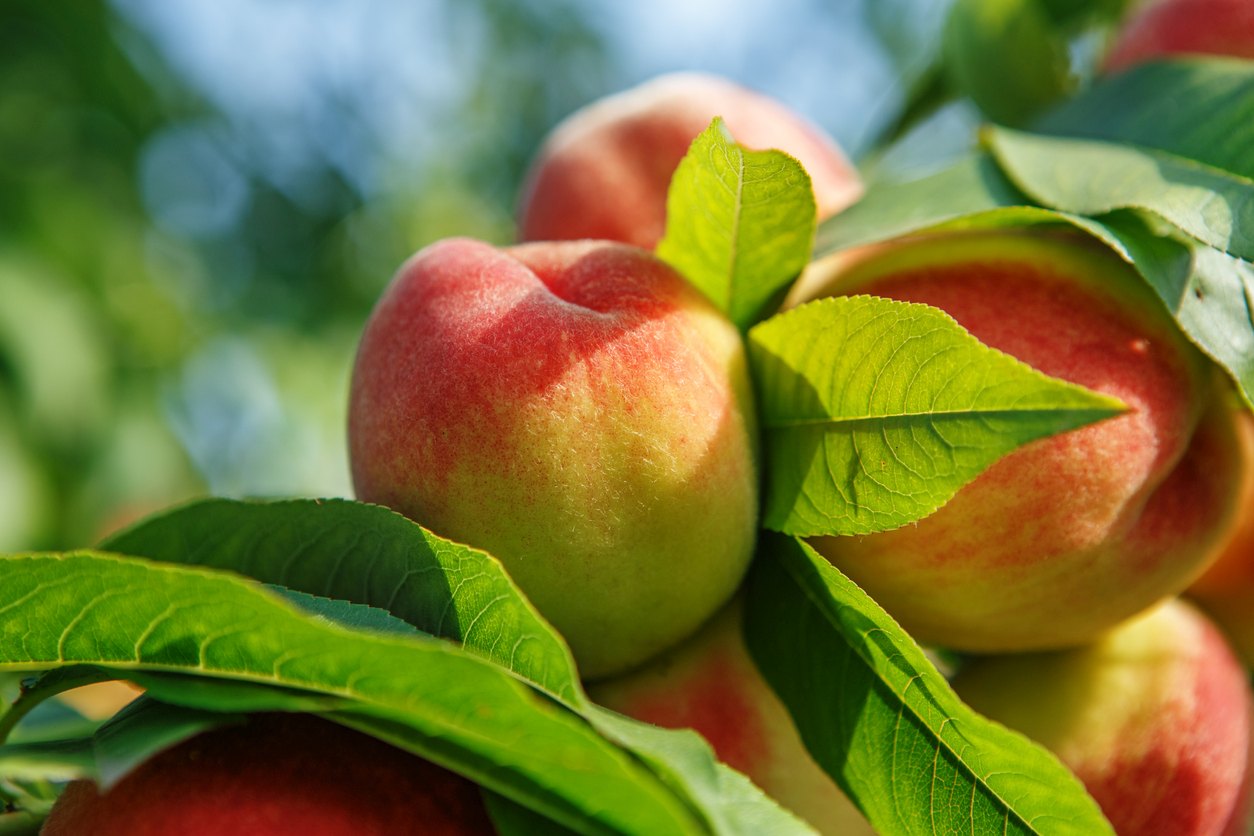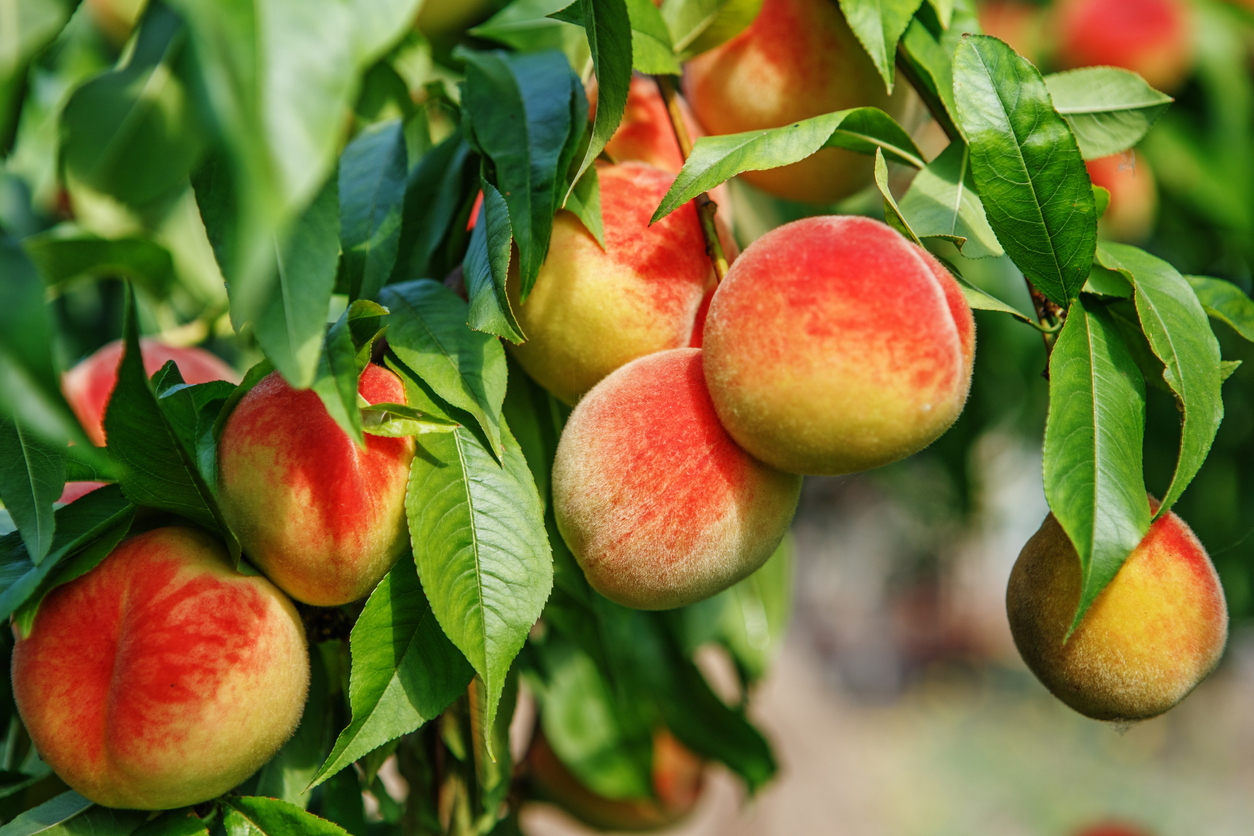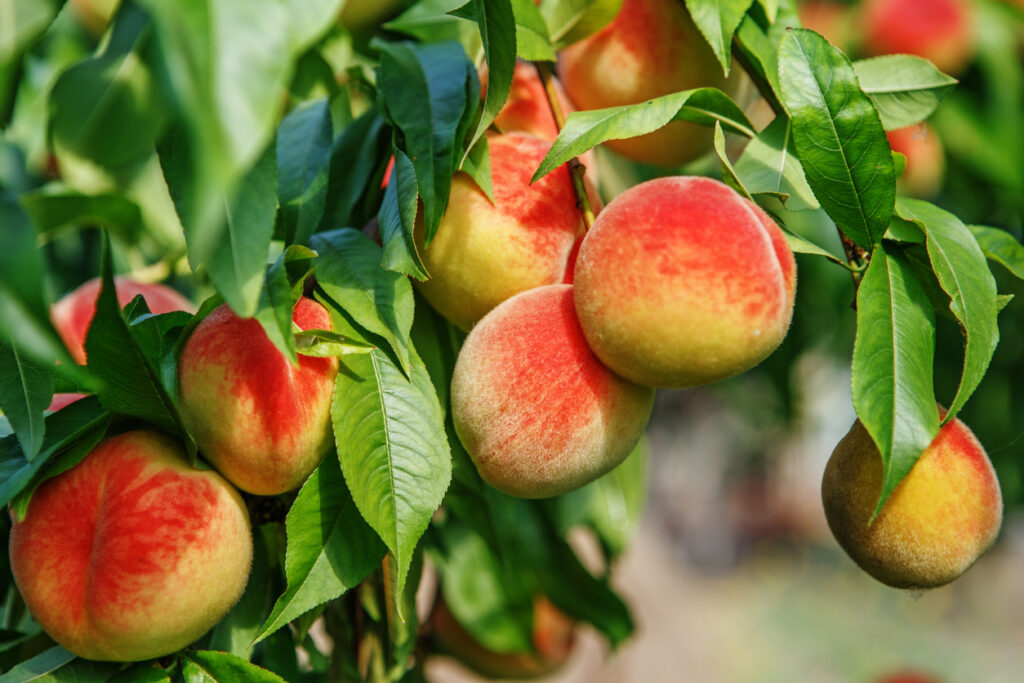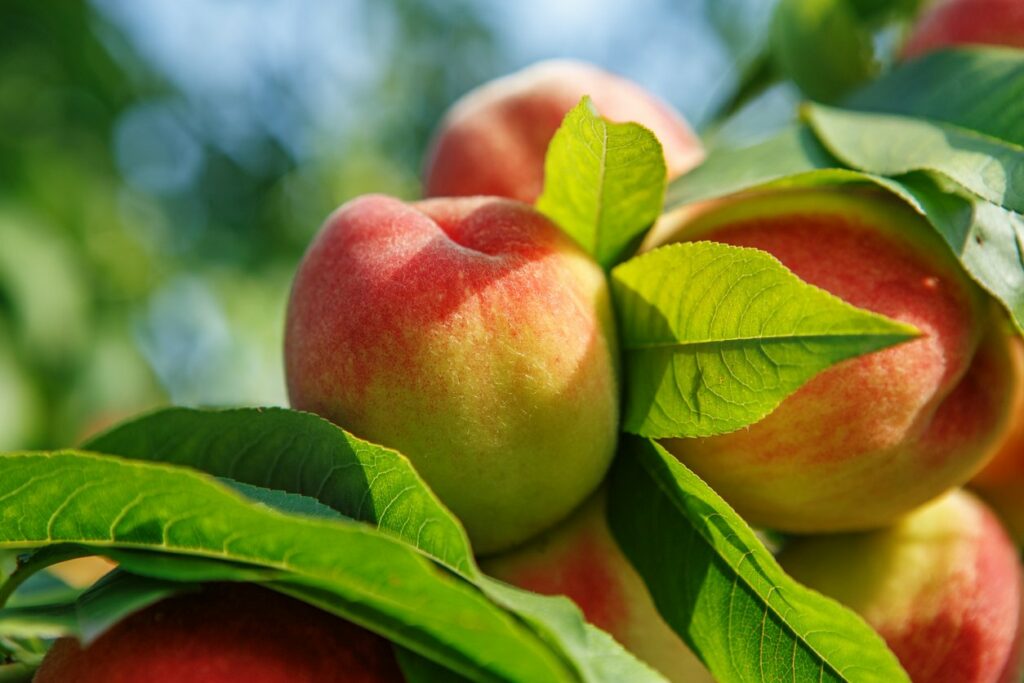Peach Tree Care – How To Grow And Harvest Peach Trees
The peach tree is a generous and luxurious tree that keeps on giving. The fruits are fuzzy, juicy, and packed with sweetness. When you’re living the dream life is nothing but peachy. So will growing a peach tree in your garden bring a favorable change of fortunes into your life? That remains to be seen. But one thing is for sure, you’ll have more desserts and tea varieties than before.
This guide walks you through the necessary steps to plant a peach tree and take care until it bears fruit. It also covers the different peach varieties you can grow and when to choose one over the other. Read on to find out more about the amazing peach tree.
All about the Peach Tree
Originally from China, the peach tree (Prunus persica) made its way to Persia before it migrated to Europe. This explains why the scientific name associates it with Persia rather than China. Along the way, the original species had undergone many changes and cross-breeding produced some wonderful cultivars.
Fuzzy or smooth, the fruits of the deciduous tree have captured our imagination. Although nectarines have smooth skin and a quite distinct flavor, they are in fact peaches. In some circles, nectarines are known as “shaved peaches”.
Left to its own devices, the peach tree will grow to 23 feet tall and the same in width. However, you can bring this untamed growth down to 10 feet high and across. It’s all about proper and regular pruning.
The leaves of the tree are broad and pointed, growing to about 3.5 inches. They’re dark green and deeply veined. But long before the leaves even grow, the flowers are in full bloom and stealing the show. In the early spring, the pink flowers invite pollinators of all shapes and sizes to enjoy this feast of color, nectar, and pollen. The solitary flowers are about one inch in diameter each and have five petals.
After pollination, the fruits develop and replace the flowers. Depending on the cultivar you grow, the fruits usually have white flesh and the fuzzy skin varies between white to yellow and burgundy. The flesh is soft and when ripe, the peach is easily bruised. So you’ll have to pay extra care when harvesting your crop.
Peach Tree Varieties
When looking for a peach tree to grow, you’ll be astonished at the number of cultivars out there to choose from. There are literally thousands of them. Some are more disease-resistant while others can tolerate temperate weather better than the rest. That said, all the peach varieties and cultivars can be grouped into the following three categories.
-
- Clingstone: A cold-hardy group that thrives between zones 4 and 6. This variety produces its fruits late in the season and the fruits are often large to medium size. The skin is often white with a slight touch of red and the flesh is creamy and sweet. Cultivars bred from this category are often juicier and have nice flavors. However, the flesh tends to stick to the stone hence the name.
- Freestone: The opposite of the clingstone, the flesh of the freestone fruit tends to peel off the stone without much encouragement. The fruits are usually medium-sized and the skin has a reddish-yellow color with blotches of redness at the top. There’s usually less fuzz on the skin than other varieties. Add to that its tolerance to cold weather and you know you got yourself a winner.
- Semi Freestone: Between the above two extremes, the semi freestone makes a place for itself. The flesh of the fruit doesn’t exactly fall off the stone uninvited, but it also doesn’t put you out or damage your teeth trying to eat it. Many of the peaches you find at the grocery store belong to this category. It’s good for canning, freezing, and eating fresh.
I recommend you look for a freestone cultivar such as Alberta or Glohaven. They are easy to grow, have a high tolerance to different weather conditions, and are disease-resistant. On top of that, these cultivars yield a good crop every year.
How to Grow A Peach Tree
As with all fruit trees that produce seeds, you can grow a peach tree from seed as well as plant a sapling. Growing a sapling is simple and doesn’t take much time. So we’ll focus here on growing the tree from seed. A word of warning, though, it needs about 3 years on average for the tree to reach maturity and bear fruit.
- After eating a delicious peach, crack open the stone to access the kernel inside.
- Fill a bag with a potting mix, add some water to get it moist, then drop the peach kernel inside then seal it.
- Keep the bag in the fridge to induce germination through cold stratification.
- It will take between 2 to 3 months for the kernel to germinate and roots to develop.
- Select a container and fill it with a general-purpose potting mix.
- Plant the seedling in the container and water it.
- Keep the container indoors in a sunny place until the last frost is over. Water it regularly to keep the soil moist.
- When the weather improves in the early spring with temperatures averaging 50 degrees Fahrenheit or above, you can move the seedling to its permanent place in the garden.
- Choose a sunny spot in your garden that gets about 6 hours of direct sunlight every day.
- Dig a hole in the ground a little deeper and twice as wide as the root ball of the small plant.
- Drive a stake in the hole then plant the small peach tree making sure to spread out the roots to fill up the hole.
- Fill back the hole with soil and pack it firmly to push out air pockets.
- Tie the small tree to the stake to provide support.
- Water the tree to help the soil settle.
Peach Tree Care
It might take longer to start your peach tree from seed, but it’s well worth the effort. As the tree grows in your garden, you need to consider pruning it to keep its size compact and improve its ornamental values.
Soil
Lightweight loamy soil is the best type for the peach tree. Check the texture of the soil before you plant your tree. If the soil is not loose enough, mix in perlite or coarse sand to improve it. Dense soil and clay are not good for this tree since the roots need well-drained soil to grow and spread. If you have doubts about the pH levels of your soil, have it tested beforehand. Adjust the pH to bring it to a neutral 6.0 to 7.0 at most. Neither acidic nor alkaline soil will encourage the tree to grow.
Water
Before it establishes, the young peach tree needs on average more water than the mature one. You’ll know that your tree is established when it starts to bear fruit. Until then, you’ll have to water it about three times a week. Every time you water it, aim for the base of the tree so that the water reaches the roots faster. Once the tree establishes, you will have to cut back watering increasingly and wait for the soil to go dry. When you water a mature tree, pour the water generously so that it goes deeper into the soil. This encourages the roots to grow sturdier and chase the deep water in the soil.
Pruning
An essential part of grooming the tree and keeping its size manageable, pruning is a top priority when it comes to caring for peach trees. A well pruned tree often yields more crop annually than a tree growing wildly. That’s because peach fruits grow only on new growth every year. So pruning the tree in the fall will ensure that the new branches will carry flowers in the next spring. You will start pruning the tree in the summer of its first year. Focus on an open-centered shape to allow more sunlight and air circulation to the inner branches. The following years you will direct your pruning shears to the middle and lateral branches leaving the predominant branches alone. This annual pruning will keep the tree within 10 feet high.
Fertilizer
The peach tree is a heavy feeder. Not only will you need to start it in rich soil, but annual fertilization is your best guarantee that you’ll have an abundant crop. You’ll start fertilizing the tree from the very first year. Experts recommend using a balanced fertilizer. For the first year, use one pound of fertilizer for every tree. Each year add another pound until the tenth year of the tree’s life. From then on, use 10 pounds of fertilizer every spring.
Pests and Diseases
One of the main criteria to choose a peach tree cultivar is disease resistance. That’s because pests swarm around this tree and feed on everything from branches and leaves to flowers and fruits. Some of these pests include Japanese beetles, leafhoppers, aphids, peachtree borers, plum curculio, scale, and Oriental fruit moths among others. Early detection is your best defense against these bugs. You can use neem oil to eliminate the small pests. As for the large ones such as Japanese beetles, you’ll need to remove them manually and drown them in a bucket full of water and detergent mix.
Harvesting Peaches
To ensure you’ll have a good harvest, you’ll need to thin out your crop early on. This helps the tree to focus its energy and resources on the remaining fruits. Without that crucial step, you’ll end up with tiny peaches by the end of the season. As the fruits grow larger, watch out for signs of ripeness. You usually have a small harvesting window and you wouldn’t want to miss it.
You’ll know that the peaches are ready to pick when they become soft to the touch. Use your hands to gently pluck them off the stem without bruising them.



